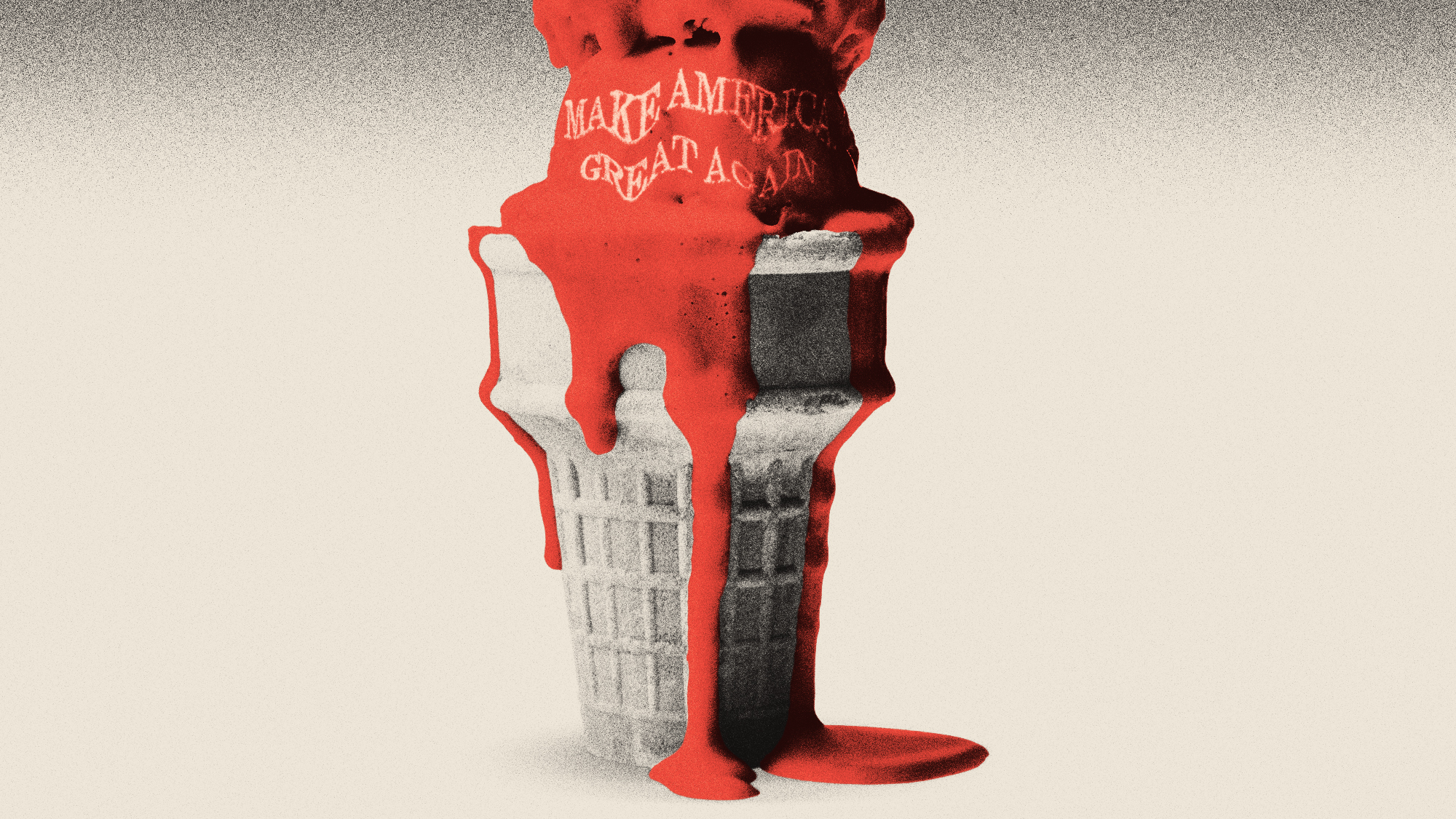Briefing: The tree in the living room
Two out of three homes in the U.S. have a real tree under their roofs this month. Last year, people bought 28.6 million real trees, spending $1.2 billion. To satisfy this demand, the nation
This time every year, millions of Americans buy one of several varieties of conifer trees and install them in their homes as part of the Christmas celebration. Where did this tradition originate?
How many trees are sold each year?
Two out of three homes in the U.S. have a real tree under their roofs this month. Last year, people bought 28.6 million real trees, spending $1.2 billion. To satisfy this demand, the nation’s 15,000 commercial tree growers plant 73 million trees every year, and tree growing now takes up about 450,000 acres of land, spread across every state in the union, with Oregon, North Carolina, Pennsylvania, Michigan, Washington, and Wisconsin, respectively, leading the way. Michigan alone grows 13 varieties, more than any other state.
The Week
Escape your echo chamber. Get the facts behind the news, plus analysis from multiple perspectives.

Sign up for The Week's Free Newsletters
From our morning news briefing to a weekly Good News Newsletter, get the best of The Week delivered directly to your inbox.
From our morning news briefing to a weekly Good News Newsletter, get the best of The Week delivered directly to your inbox.
How did this all start?
Like many of our holiday traditions, its roots can be traced back to pagan rituals. The ancient Romans and pre-Christian Germanic tribes both adorned their homes with evergreens to add some cheer during the depth of winter. When Christians began celebrating Christmas, the tree was incorporated into the holiday, with its triangular shape seen as a symbol of the Trinity. Legend has it that the 16th-century German theologian Martin Luther created the tradition of decorating the tree by adding candles to remind him of the stars twinkling from heaven. German settlers probably brought the Christmas tree tradition to America in the 1700s.
Was the idea embraced right away?
No. Few Americans had trees at Christmas until the 20th century. They weren’t even sold commercially until 1851, when a fellow named Mark Carr opened the nation’s first Christmas tree stand by carting two ox sleds’ worth of trees down from the Catskills to New York City’s Greenwich Village, where he hawked them for an exorbitant $1 apiece. In 1918, the first Christmas tree farm was established in Indiana County, Pa. Tree farming really took off during the Depression, when growers found that they couldn’t sell their conifers for landscaping but could unload them for yuletide use. Today, 98 percent of Christmas trees are grown on farms.
A free daily email with the biggest news stories of the day – and the best features from TheWeek.com
Just how are they grown?
In general, it takes between six and 10 years to nurture a tree to salable condition. Growers will generally cram more than 2,000 trees into a single acre; half may die before reaching maturity. Almost all of those that survive need shearing to achieve the desired triangular shape. Around Thanksgiving, harvesters start working frenetically to cut and transport their crop for the five-week marketing season. Nearly 29 million trees have to be quickly cut and moved to market. Speed is so essential that in the Pacific Northwest, up to 70 percent of trees are whisked to departing trucks via helicopter. “No one wants a tree the day after Christmas,” said Kyle Gunsauls, a chopper pilot with Holiday Tree Farms in Corvallis, Ore.
What are the most popular varieties?
The Scotch pine is No. 1, commanding about 40 percent of the market. The Douglas fir is a close second with 35 percent. Four other varieties—the noble fir, white pine, balsam fir, and white spruce—constitute an additional 15 percent of sales. Each has its strong and weak points. Whatever their merits, all natural trees have one thing in common: Their needles and sap make a mess in people’s homes. For that reason, artificial trees are taking over a growing share of the market.
Why the trend toward artificiality?
As they reach their 50s and 60s, baby boomers are getting tired of wandering through tree stands in the bitter cold to find just the right specimen, getting all sticky and dirty with resin while putting the darn thing up, and then throwing it out, leaving a trail of desiccated pine needles through the house. At the same time, ersatz trees have become a more appealing alternative; they have come a long way since the tacky old-fashioned kind, which resembled green pipe cleaners stuck in a wooden pole. Last year, 9.3 million artificial trees—85 percent of them imported from China—were sold in the U.S., up 2 million from just five years ago. At an average price of $68, they’re more expensive than nature’s own, whose average national sales price is $40. But then, you only have to buy one.
Is there a downside?
Artificial trees are made of polyvinyl chloride, so when dumped into landfills, these trees last for centuries. The polyvinyl chloride itself is derived from petroleum, whose production releases greenhouse gases. Swedish researchers have estimated that it takes five times more energy to create and ship a fake tree than to grow a real one. To transport a fake plastic tree from China to an American retail outlet requires gallons of fuel, adding to the tree’s “carbon footprint.”
So are natural trees eco-friendly?
Yes and no. Growing just one requires about 0.5 ounces of pesticides. When multiplied by millions of trees, that’s a veritable warehouse of chemicals. Among them is glyphosate, which has lately been turning up in the homes and urine samples of Christmas tree workers. The growing popularity of natural varieties such as noble and Fraser firs has yielded an increase in pests such as the balsam woolly adelgid, the balsam twig aphid, and the spruce spider mite. On the other hand, a single acre of Christmas trees does produce enough oxygen to sustain 18 people. That acreage will also absorb the carbon dioxide of a car driven 26,000 miles. Vicky Hoover of the Sierra Club says the greenest option is simply to go out and admire evergreens in their natural setting, but she sees some value in the old tradition. “As our society gets more divorced from nature,’’ she says, “having that real tree in the living room combats the artificiality of modern living and offers the opportunity to reconnect with nature.’’
-
 Metaverse: Zuckerberg quits his virtual obsession
Metaverse: Zuckerberg quits his virtual obsessionFeature The tech mogul’s vision for virtual worlds inhabited by millions of users was clearly a flop
-
 Frank Gehry: the architect who made buildings flow like water
Frank Gehry: the architect who made buildings flow like waterFeature The revered building master died at the age of 96
-
 Is MAGA melting down?
Is MAGA melting down?Today's Big Question Candace Owens, Tucker Carlson, Laura Loomer and more are feuding